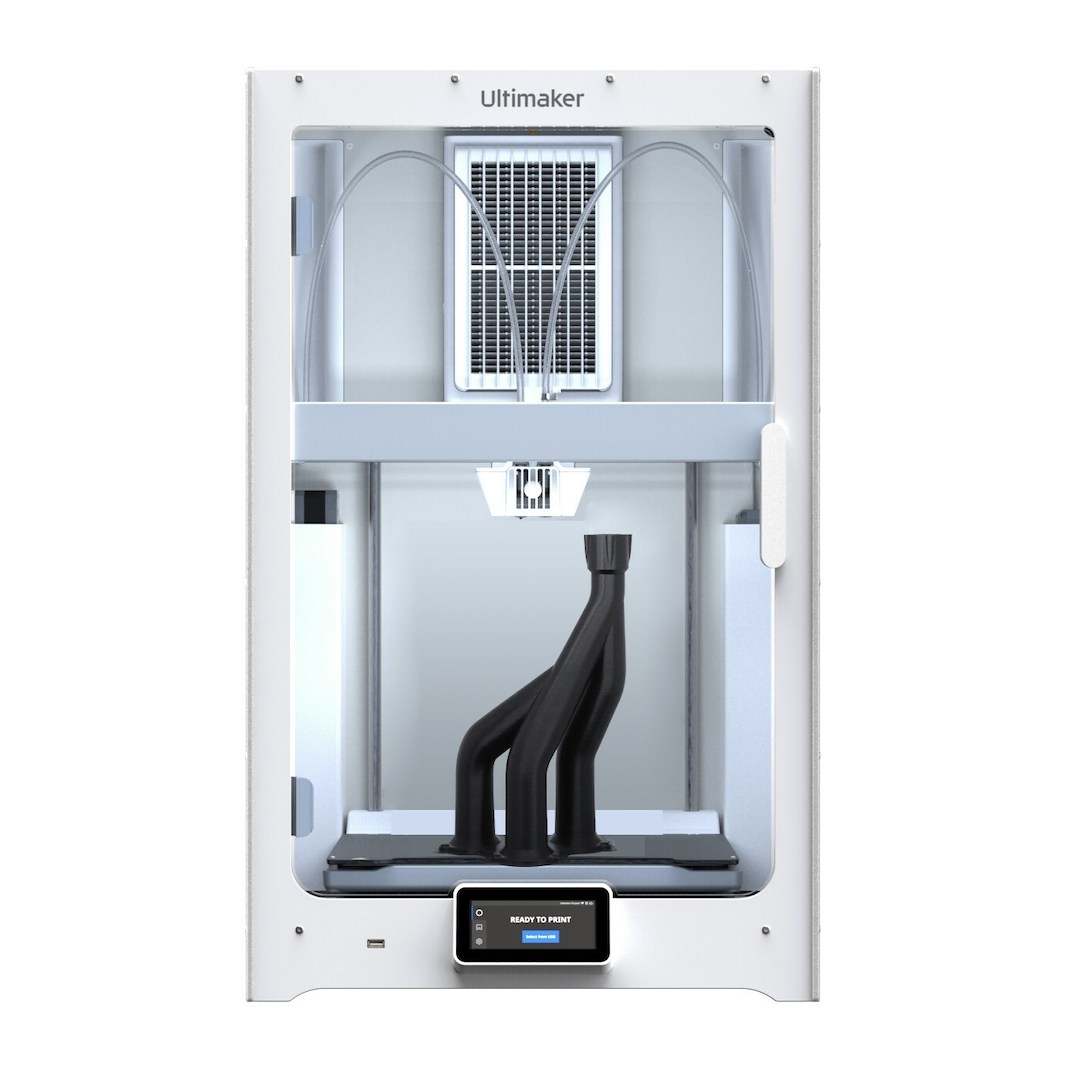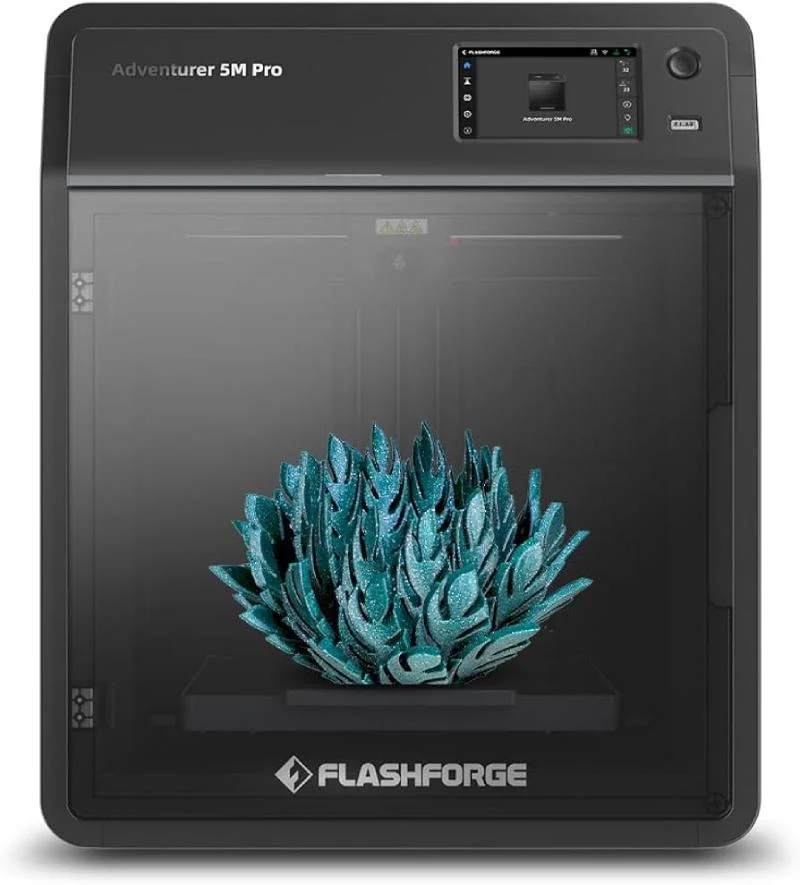Compare S7 vs Adventurer 5M PRO
Comparison between the best 3D printers
Choose the best 3D printer at the best price. The cheapest 3D printers are here.
Buy a 3D printer here with 3D Fila.
 |
 |
|
| Model | S7 |
Adventurer 5M PRO |
| Printing Material | Filament | Filament |
| Buy Filament for Ultimaker S7 | Buy Filament forFlashforge Adventurer 5M PRO | |
| Estimated price | $8300,00 | $599,00 |
| Manufacturer | Ultimaker | Flashforge |
| Release Year | 2022 | 2023 |
| Print Volume [mm] | 240x330x300 | 220x220x220 |
| Printer Size [mm] | 585x495x800 | 380x400x453 |
| Weight [kg] | 29 | 10,8 |
| Power Loss Recovery | YES | YES |
| Enclosed printer | YES | YES |
| Bed Leveling | Automatic | Automatic |
| Filament End Sensor | YES | YES |
| Bed type | Heated | Heated |
| Power supply system | Bowden | Direct Drive |
| Standard nozzle | 0,4 | 0,4 |
| Maximum Nozzle Temperature [°C] | 280 | 280 |
| Maximum Bed Temperature [°C] | 120 | 110 |
| Maximum printing speed [mm/s] | 180 | 600 |
| Filament holder | YES | YES |
| Camera for supervision | YES | YES |
| Recommended filaments | PLA, ABS, PETG, PC, Nylon, Tritan, PP | PLA, PETG, TPU, PLA-CF, PETG-CF |
| Recommended slicers | Cura | FlashPrint 5 |
| Maximum Resolution [mm] | 0,1 | 0,1 |
| Processor | ||
| Display | Display touchscreen 4,7'' | Touchscreen 4,3'' |
| Power Supply | 500 W | 350 W |
| Connectivity | USB / Wi-Fi | Wifi / Ethernet / USB |
| Operating systems | Windows, Mac, Linux | Windows, Linux, Macbook |
| Date of registration in the system | 2023-01-28 | 2024-07-09 |
| Release date | 2022 | 2023 |
| Extra features | The UltiMaker S7 printer features a series of technological innovations to enhance 3D printing. It incorporates a flexible, magnetic build plate with PEI coating, promoting better adhesion and easier part removal. Its new inductive sensor significantly improves bed leveling, ensuring perpendicular and accurate prints. In addition, the S7 has a higher quality camera for remote monitoring, an integrated air filter, and uses a unique glass door to maintain a constant temperature in the print chamber. The machine is also compatible with the expansion kit for metal printing. | The Flashforge Adventurer 5M PRO features advanced features such as a CoreXY motion system, direct drive extruder, print speeds of up to 600mm/s and maximum acceleration of 20,000mm/s². It features fast nozzle changes, automatic calibration, active vibration compensation, camera monitoring, time-lapse video, HEPA and carbon filters for particles and VOCs, and an intuitive 4.3-inch touchscreen interface. Ideal for printing materials such as PLA, PETG, ABS and TPU. |
| Support for multiple colors and materials (AMS and CFS) | NO | NO |
Notes * |
||
| Cost-benefit | 1 / 10 | 7 / 10 |
| Hardware | 4.2 / 10 | 4 / 10 |
| Tela | . | . |
| Print volume | 4 / 10 | 3 / 10 |
| Performance | 1 / 10 | 5 / 10 |
Conclusion |
| In comparing the Ultimaker S7 and the Flashforge Adventurer 5M PRO, it is clear that both 3D printers cater to different market segments and user needs. The Ultimaker S7, while being significantly more expensive, offers advanced features such as a high-quality camera for monitoring, an integrated air filter, and a flexible magnetic build plate that enhances print adhesion and removal. Its larger print volume and robust construction suit professional users and businesses that prioritize precision and print quality, and its compatibility with an expansion kit for metal printing underlines its position as a versatile machine for complex fabrication tasks. On the other hand, the Flashforge Adventurer 5M PRO is notably more affordable and shines in terms of performance, boasting higher maximum printing speeds and advanced features like automatic calibration and active vibration compensation. It is designed with user-friendly elements that cater well to beginners and hobbyists who seek an efficient, cost-effective solution for common materials. Its smaller print volume, while limiting for some applications, is ideal for many standard projects and is complemented by smart connectivity options. In summary, if budget and entry-level performance are primary concerns, the Flashforge Adventurer 5M PRO stands out as an excellent choice potentially yielding better cost-effectiveness. In contrast, the Ultimaker S7 is ideal for professional environments where print quality, reliability, and advanced features justify the higher investment. Ultimately, the decision between the two should hinge on individual printing needs, budget considerations, and the specific materials and applications intended for use. |

